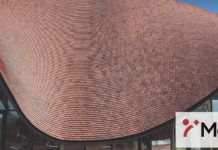The introduction of BS 5534:2014 should have made the process of choosing and grading timber roofing battens much simpler and safer, improving quality and effectively getting rid of the risky practice of grading by eye on site. Now only battens that have been pre or factory graded to BS 5534 are actually allowed to be called roofing battens.
However, BS 5534 doesn’t actually state how or where the battens should be graded. There are many roofing battens on the market which can still leave contractors confused.
There are also concerns that roofers may be buying cheaper, often imported battens, which they think are compliant, but actually aren’t. So, it is therefore important for contractors to carry out their own quality checks before installation and if they have any doubts about the grade of roofing battens, then they should always check with the supplier.
We believe that mechanical grading, using camera and laser scanning technology, is able to produce the most accurate and consistently graded roofing battens. Our JB Red roofing battens are put through a laser grading machine called Goldeneye, which scans the battens to deliver a high level of accuracy, consistency and ultimately, quality assurance. This means they don’t require further grading checks on site but, as with any building material, it is recommended that you inspect battens to make sure they have not suffered any obvious damage in transit.
We have put together a simple checklist that roofing contractors can use to check that all of the battens they are using are BS 5534 compliant and to help them spot any potential defects.
What to look for in graded battens
Is it BS 5534 compliant?
1. Don’t go on colour alone – Using a coloured batten does not guarantee BS 5534 compliance. While our JB Red battens and other coloured battens are compliant with the British Standard, this is not necessarily the case with all coloured battens. You must also check that the batten has the right labels.
2. BS 5534 compliance marking – To be used on a roof, each batten should be indelibly marked to show it is graded to BS 5534, as well as showing supplier, origin, graded BS 5534, size and type of preservative (if applicable).
3. Dimension and length – The recommended minimum batten sizes are either 50mm width x 25mm depth, or 38mm width x 25mm depth depending on the span. BS 5534 allows a tolerance of +/- 3mm on the width and +3mm/-0mm on the thickness. These dimensions are based on measurement at 20% moisture content.
Does it have any defects?
All defects should be cut out and any batten less than 1.2 metres long (or sufficient to span at least 3 supports) should be discarded. Check for the following defects:
1. Knots – Some knots are allowed, depending on their size and position. If a knot appears on both sides of the face, then it must not be bigger than half the width of the batten.
A knot appearing on both sides of the batten and on the face is not permissible. A knot appearing on both sides of the batten, which does not appear on the face, is only deemed permissible if the knot on either side is 1/5 of the depth or less.
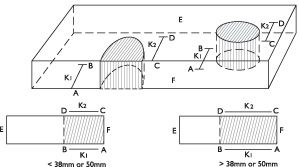
2. Missing corners – BS 5534 does allow for a missing corner on the batten, otherwise known as wane. However, it is only permitted on one axis and should not exceed one-third of the dimension of each of the faces on which it occurs.
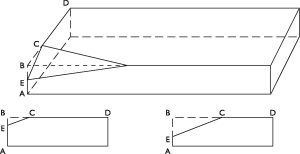
3. Slope of grain – The slope of grain from the longitudinal axis must not deviate by more than 1 in 6 on either axis (see diagram). There is a method and tool for measuring this in BS 4978 (Specification for visual strength grading of softwood).
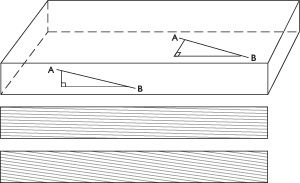
4. Batten distortion – Battens need to be straight, so BS 5534 sets a tolerance on distortion. Bow, spring or twist should each not be greater than 5mm, measured over a length of 1.2m at a reference moisture content of 20% (see diagram below). Battens cut from sideboards are unlikely to distort which is why JB Red battens are only manufactured from kiln dried sideboards.
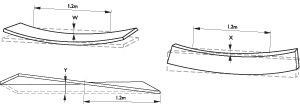
5. Splits and fissures – End splits (through the piece) that occur before fixing should be trimmed off. End splits or splits at intermediate supports that occur due to nailing should not be greater than 150mm long. Fissures (not through the piece) should not exceed half the batten thickness or 300mm in length.
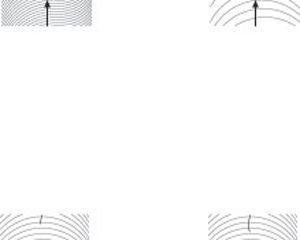
For a complete guide to batten checking, request your free pocket checklist by emailing Info@marley.co.uk.

